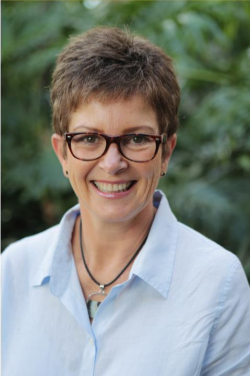
The WHO CC UTS acknowledges use of key language from The WHO Global Strategic Directions for Nursing and Midwifery (2021–2025).
The extent of child abuse and neglect in Vietnam are not known but data suggests the problem is widespread. In 2018, Vietnamese police recorded 1547 cases of child abuse, but due to shame and secrecy, the actual figures are suspected to be much higher [1]. It is estimated between 48 and 70 percent of Vietnamese children experience physical abuse in their lifetime [2].
Jennifer Fraser (currently an Associate Professor of Nursing at the University of Sydney) has spent years looking into what she calls the “nitty gritty” of how nurses and midwives engage with child abuse and neglect. Her recent work has been in Vietnam, where child protection is a massive issue.
Fraser learned that child abuse is seen differently to how it is in Australia. Whereas in Western countries, child abuse cases generally are seen in hospitals, in Vietnam, families would be more likely to take it to the Commune leader or the Women’s Union as it seen as more of a social problem.
We’ve got to know how to access those networks because these are the people who in reality are responsible for the health and welfare of the children in these communities,
she says.
While working in Vietnam, Fraser faced bureaucratic challenges, funding shortfalls and language barriers but persevered and ran successful projects which built the capacity of hospital medical staff to think about child risk and neglect, and how to help. Crucially, she eventually became involved in drafting legislation, but beforehand Fraser worked in one of Ho Chi Minh’s biggest teaching hospitals, which has an emergency and outpatient department serving over 2,000 children a week [2].
There are a lot of families that come through — it’s quite incredible,” she says. “Statistically there are many cases of intentional injury that come through the doors. We were keen to look at what services there were and what capacity there was around among the doctors and nurses in terms of identifying it.
Through a needs analysis, and focus groups with doctors and nurses and midwives, a training program was run on shaken baby syndrome (SBS), a form of abusive head trauma. Medical staff learned about the syndrome. They picked up techniques on how to teach parents about managing a crying infant.
They [the medical staff] were really excited,” she says. “They had something of a show and tell for their new parents. They embraced it very well.
Fraser was also involved in running workshops to develop relationships between community workers and acute care clinicians, who often had nothing to do with each other. “As best we could, we have tried to raise awareness and build capacity for them to work together.”
The academic also worked with UNICEF in helping to write new child protection legislation, which was introduced by the Vietnamese government in 2017. The United Nations Children’s Fund was interested in her Ho Chi Minh City hospital work as she was building evidence as to how the legislation could be implemented into real policy.
The legislation came in 2017 but Fraser says it could take a while to have impact.
It is a very patriarchal society. So while women are in the workforce, and when you first go there everything appears equal and great, once you start a network of friends, you can see that in the household it is extremely patriarchal,” she says. “It’s not about throwing money at the child protection system but changing relationships between men women and children, and men having ownership of households. People are trying hard …. there is a sense that people want to move towards the protection of women and children. But at the coalface and in the community, it's going to take a long time to change the cultures that exist,
she says.
Back in Australia, Fraser continues her work with building capacity around child protection. She and Tara Flemington, a PhD student, are running a pilot at hospitals across the state with the support of NSW Health. She wants to see families identified as having problems put into supportive services rather than sending them straight to child protection.
She says it is important, “because child protection services are almost totally overwhelmed at the moment … in almost every jurisdiction they are in chaos.”
[1] Osborne, Z., 'Shame and pain': Vietnam starts to grapple with child abuse epidemic. 2019.
[2] Fraser, T.F.a.J., Building workforce capacity to detect and respond to child abuse and neglect cases: A training intervention for staff working in emergency settings in Vietnam. International Emergency Nursing, 2017. 34(September 2017): p. 7.

